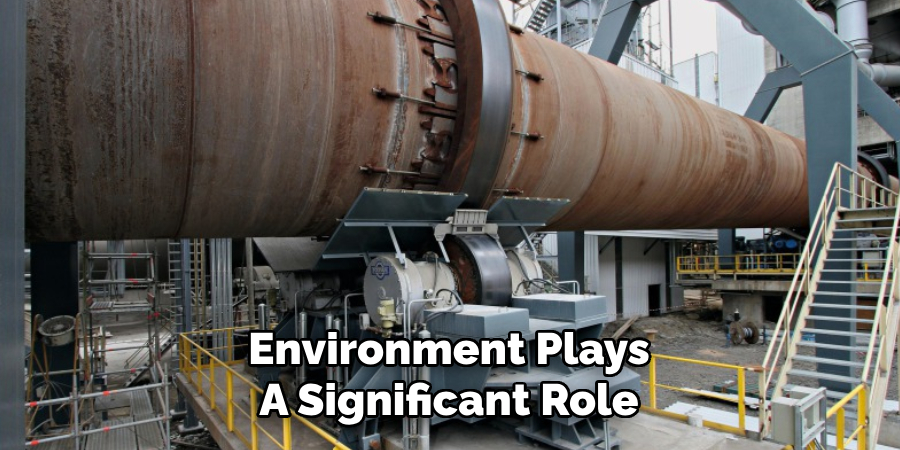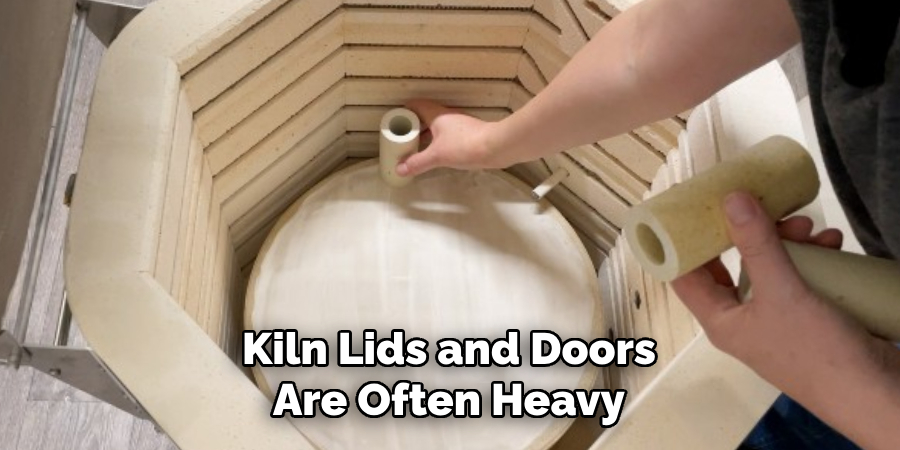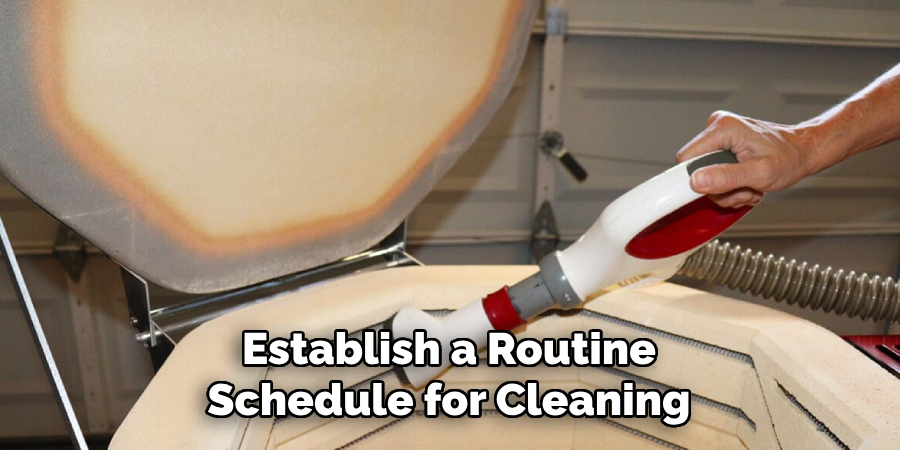Properly storing a kiln when it’s not in use is essential to maintain its functionality and extend its lifespan. Kilns are sensitive pieces of equipment that require care and attention to avoid damage from environmental factors, such as moisture, dust, or temperature fluctuations.

This guide explores the key aspects of how to store a kiln when not in use. By taking the right precautions, you can ensure your kiln remains in optimal condition, ready for use whenever needed.
Importance of Properly Storing a Kiln
Proper storage of a kiln is crucial not only for protecting your investment but also for ensuring consistent performance over time. Kilns are constructed with sensitive components, including heating elements and insulating materials, which can deteriorate if exposed to unfavorable conditions.
By storing your kiln correctly, you minimize the risk of damage from moisture or dust, which can lead to rust, corrosion, or reduced efficiency. Additionally, proper storage helps to maintain the structural integrity of the kiln, ensuring that it operates safely and effectively. Neglecting to store a kiln appropriately can result in costly repairs or replacements, making proper storage a key responsibility for any kiln owner.
10 Methods How to Store a Kiln when Not in Use

1. Clean the Kiln Thoroughly Before Storing
Before putting your kiln into storage, give it a thorough cleaning. Remove any leftover debris, such as glaze drips, ceramic dust, or broken fragments. Use a soft-bristle brush or vacuum to clean the interior, especially around the firebrick and heating elements, to prevent buildup that could affect its functionality later.
If your kiln has removable shelves or posts, clean them as well and store them separately to avoid scratching or damaging the kiln’s interior during storage.
2. Inspect the Kiln for Damage
Conduct a detailed inspection of the kiln before storing it. Look for cracks in the firebrick, worn-out gaskets, or frayed electrical cords.
Addressing these issues before storage ensures that the kiln remains in good condition and is ready for use when needed. Replace any damaged parts, such as thermocouples or heating elements, and tighten loose connections. Documenting any repairs made before storage can also be helpful for future reference.
3. Disconnect the Kiln from Power Sources
Always unplug your kiln from its power source before storing it. Leaving the kiln connected poses a risk of accidental activation or electrical damage, especially if the storage area experiences power surges or fluctuating conditions. Wrap the power cord neatly and secure it with a cable tie to prevent kinks or tangling during storage. For kilns with gas connections, ensure that the supply is shut off and the connections are safely capped.
4. Choose a Dry, Temperature-Stable Storage Location
The storage environment plays a significant role in preserving the kiln’s condition. Select a location that is dry, well-ventilated, and protected from extreme temperatures. Moisture can damage the kiln’s firebrick and metallic components, while temperature fluctuations may cause warping or expansion of parts. Avoid storing the kiln in damp basements, garages prone to leaks, or areas exposed to direct sunlight. A climate-controlled room or storage facility is ideal.
5. Cover the Kiln to Protect Against Dust and Debris
Dust and debris can accumulate on and inside a stored kiln, potentially damaging its heating elements or causing contamination during future firings. Use a kiln cover or heavy-duty tarp to shield the kiln. Ensure the cover fits snugly but still allows some airflow to prevent trapping moisture. Avoid using plastic wraps directly against the kiln, as they can retain condensation and lead to rust or mildew.
6. Store Kiln Accessories Separately

Kiln shelves, posts, and other accessories should be stored separately from the main unit. Place them in a padded container or wrap them individually in bubble wrap to prevent chips or cracks. Label each item to make setup easier when the kiln is brought back into use. If the shelves have kiln wash or glaze residue, clean them thoroughly before storage to prevent deterioration or contamination.
7. Elevate the Kiln Off the Floor
To protect the kiln from potential water damage or pests, elevate it off the floor during storage. Place the kiln on a sturdy pallet, platform, or metal stand to keep it dry and stable. Elevating the kiln also makes it easier to inspect and clean around it, ensuring a well-maintained storage area.
8. Secure the Lid or Door
Kiln lids and doors are often heavy and can become misaligned if not properly secured during storage. Use straps or locking mechanisms to hold the lid or door in place. This prevents accidental opening, which could strain the hinges or allow dust and debris inside. Be sure not to overtighten the straps, as excessive pressure could damage the firebrick.
9. Label the Kiln for Easy Identification
If you’re storing multiple kilns or placing the kiln in a shared space, label it clearly with its model number, specifications, and any relevant notes about its condition. Attach a tag or label to the kiln’s exterior for quick identification. This is particularly useful in professional studios or educational settings where several kilns may be in storage simultaneously.

10. Perform Regular Maintenance Checks
Even when the kiln is in storage, periodic maintenance checks are essential. Every few months, inspect the kiln for signs of dust buildup, rust, or pests.
Check the integrity of the cover and ensure the storage environment remains dry and temperature-stable. If you notice any issues, address them promptly to prevent further damage. Performing these routine checks helps ensure the kiln will be ready for use when needed.
Maintenance and Upkeep
Proper maintenance and upkeep of your kiln not only extend its lifespan but also ensure its efficiency and safety during operation. Regularly cleaning and inspecting the kiln, even when not in use, helps identify potential issues early and prevents costly repairs. Always follow the manufacturer’s guidelines for maintenance to preserve the kiln’s warranty and functionality.
Cleaning and Care
After each use, clean the kiln carefully to remove debris such as glaze drips, ceramic dust, or residue from firings. Avoid using abrasive tools that could damage the firebrick or heating elements. For exterior cleaning, use a damp cloth to wipe down the surface, removing dust or dirt that may accumulate over time.
Periodic Inspections
Conduct detailed inspections every few months to check for signs of wear and tear. Look for cracks in the firebrick, damaged gaskets, or loose connections in the wiring. Pay close attention to the condition of the thermocouple and heating elements, as these are critical for accurate firings. Replace any damaged components immediately with manufacturer-approved parts.
Calibration and Testing
To ensure consistent performance, periodically calibrate your kiln according to the manufacturer’s instructions. Test the kiln’s temperature accuracy by using witness cones or a pyrometer during firings. If you notice discrepancies, consult a technician for adjustments to keep your kiln firing properly.
Storing When Idle
If your kiln will not be in use for an extended period, follow the proper storage methods outlined earlier. Protect the kiln from moisture, dust, and temperature fluctuations to maintain its condition. Perform occasional maintenance checks on the stored kiln to address any developing issues.
Things to Keep in Mind
When working with kilns, there are several key considerations to ensure safety, efficiency, and the longevity of the equipment:
- Read the Manufacturer’s Guide: Always familiarize yourself with the specific manufacturer’s manual for your kiln. This ensures you’re following instructions accurately for operation, maintenance, and safety precautions.
- Prioritize Safety: Kilns operate at extremely high temperatures, so always use appropriate personal protective equipment (PPE), such as heat-resistant gloves and safety glasses, when handling or inspecting the kiln. Make sure the area around the kiln is free from flammable materials.
- Proper Ventilation: Ensure the kiln is in a well-ventilated space, as the firing process can release fumes that are potentially hazardous. Consider installing a venting system if one is not already in place.
- Monitor During Operation: Never leave a kiln unattended while it is firing. Keep a log or timer to track firing cycles and check the kiln periodically. This prevents overheating and helps quickly address any potential malfunctions.
- Keep a Maintenance Schedule: Establish a routine schedule for cleaning, inspections, and calibration. Consistent maintenance prevents breakdowns and ensures high-quality firings every time.
- Use Proper Loading Techniques: Always load your kiln carefully, ensuring items are not touching each other or the kiln walls. Overloading can lead to uneven firings or damage to both the kiln and your workpieces.
- Avoid Overfiring: Be precise when setting temperatures and firing durations. Overfiring can damage both the kiln and the items being fired, leading to unnecessary repairs and material loss.

Conclusion
Storing a kiln when not in use requires a combination of cleaning, careful handling, and strategic placement to protect its delicate components. By following these ten methods, you can maintain your kiln’s condition and prolong its lifespan.
From choosing the right storage environment to performing regular maintenance checks, each step plays a crucial role in safeguarding your investment and ensuring its readiness for future firing projects. So, there you have it – a quick and easy guide on how to store a kiln when not in use.
Specialization:
- Master of wheel-throwing, hand-building, and advanced glazing techniques
- Focus on creating both functional pottery and decorative art pieces
Recognition:
- Celebrated by collectors and art enthusiasts for creating one-of-a-kind pieces that blend artistry with functionality
- Participates in local and national exhibitions, earning accolades for his innovative designs and craftsmanship
Passion:
- Deeply committed to exploring and pushing the boundaries of ceramic artistry
- Continuously experiments with new materials, firing techniques, and artistic concepts to evolve his craft
Personal Philosophy:
- Believes in the transformative power of art, aiming to evoke emotions and connections through his ceramic creations
- Advocates for sustainability in ceramics, using eco-friendly materials and practices whenever possible


